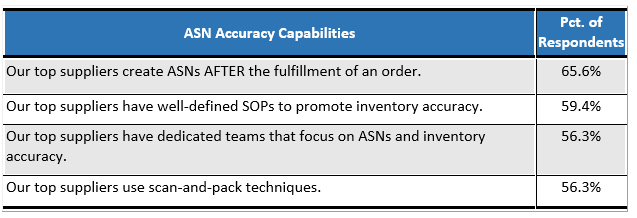As someone who has made his share of bad decisions and then some, far be it from me to discount the value of good decision making. But as conventional wisdom supported by popular business literature would have it, good decision-making is a major key to success. But good decision-making is not the only component to a positive outcome. Good assumptions are just as important as the decision itself, and of even greater importance is the need for a rigorous process to continuously challenge our assumptions going forward.
Let me explain.
Compliance Networks Says... |
 |
| Both scenarios can be avoided if the retailer challenges the assumption that all ASNs are correct. |
 |
|
|
As the father of 3 daughters living in South Florida, nothing is more harrowing than watching your child pull away in a car. Countless times I have expounded on the virtues of not only good decision making on the road, but to make good assumptions as well. For example, if you are sitting at a red light and it turns to green is it a good decision to go? Of course it is. But is it good to assume all the other drivers are going to stop when their light turns red and proceed without caution? Have you been to South Florida lately?
Keeping with our South Florida theme, another example is the pre-hurricane dance my neighbors and I experience every time a storm approaches: we stand in our front yards and debate whether the hurricane will hit us or not. Inevitably, and predictably, we arrive at “no”, because a “yes” answer will involve countless hours in the hot sun putting up and taking down heavy shutters - a perfect example of a self-serving assumption at work.
So, what does this have to do with vendor performance and supply chain improvement? In a word, everything. Poor and self-serving assumptions cloud decision making in all facets of life. When mistakes are made, it is often attributed to “poor decision making” while rarely examining the assumptions that led to the poor decision in the first place. Are all assumptions self-serving? No, but it doesn’t take many self-serving assumptions to corrupt a decision-making process.
Visit the Retail Vendor Performance Management home page to learn more
and subscribe to the monthly newsletter.
In 2011, Compliance Networks partnered with Auburn University and the Retail Value Chain Federation to present Facilitating Supply Chain & Visibility Accuracy, An Analysis of ASN Benchmarks and Best Practices . The study concluded that 3-7% of ASNs are inaccurate, resulting in potential margin risk for the retailer. If inventory is overstated, the retailer encounters out-of-stock scenarios which, in addition to the lost margin, also result in damage to the brand. If inventory is understated, unnecessary capital and holding costs are required as well as markdowns.
2017 Research from Auburn on Retailers and ASNs

Both scenarios can be avoided if the retailer challenges the assumption that all ASNs are correct. Are these assumptions at times self-serving by the practitioner? Perhaps. We often see retailers relying on past performance (remember what your stockbroker told you), personal relationships with the vendors or even in certain cases the vendor’s brand cache. Whatever the case, the process of rigorously measuring vendors’ ASN performance is clearly a best practice and yields positive financial results. And in this omni-channel dominated environment, speed, accuracy and inventory integrity are more important than ever.
So is decision making overrated? That’s one of those silly questions posed in the footer of a TV sports or political show. But in many cases, I believe the answer is “Yes”. Hindsight is 20/20: we can look back at things we would have done differently, such as investments, career choices, relationships, business decisions and even vendor performance initiatives. The bigger question going forward is: are we rigorously challenging our assumptions to improve decision-making and drive better, more profitable outcomes?
In 2017 Compliance Networks will again partner with Auburn University and the Retail Value Chain Federation to do a refresh of the 2011 study. Details of the study and how you can participate will be posted here at Supply Chain Digest soon. Stay tuned.
Any comments on this article? Please send below.
Your Comments/Feedback
|